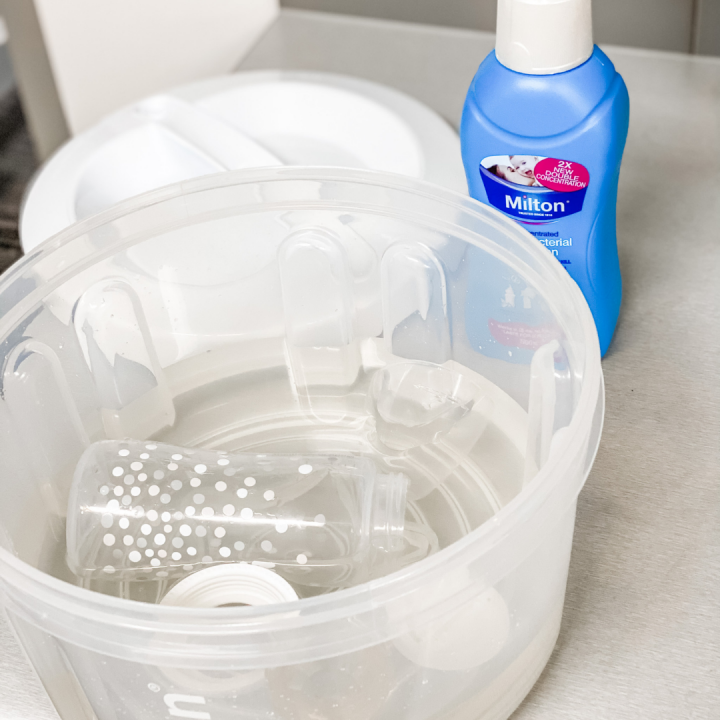Sterilising basics – what’s important to know

It’s easy to become confused about what’s important when it comes to sterilising baby bottles and feeding equipment. And though there have been a lot of changes in general baby care practices, one thing which hasn’t changed is the recommendation for sterilisation.
Why do I need to sterilise baby feeding equipment?
Young babies have an immature immune system. This means that they are vulnerable, not able to fight off some infections and are prone to becoming sick. Milk is also a perfect medium for bacteria to grow and multiply. Using clean, sterilised equipment and ensuring that formula, or expressed breast milk (EBM) are kept cold, helps to reduce the chances of babies becoming unwell.
Feeding guidelines
- Throw away any milk your baby has not finished within one hour of starting their feeds.
- Separate all parts of the bottle and clean them separately. Milk can often collect in the threads where the cap screws on, so it’s important to remove all milk residue thoroughly.
- Replace the bottle and teat brush once the bristles are worn down. They can only work effectively when the bristles are stiff enough to reach into all areas of the bottle.
- Rinse bottles, teats and screw caps in cold water immediately after feeding if you can’t wash the bottle straight away. This will make them easier to clean later. Use a bottle brush if you’re handwashing your baby’s feeding equipment.
- You can use a dishwasher to wash bottles and screw caps – place them in the top shelf and run the dishwasher on the hottest and longest cycle, this is generally the ‘pot cycle’. Wash teats separately in hot soapy water and squeeze clean water through the teat holes.
5 tops tips for sterlising
- Sterilise all bottle-feeding equipment until your baby is 12 months of age.
- It’s important to wash and rinse all feeding equipment by washing in hot, soapy water.
- Sterilising helps to kill germs which can be harmful to babies.
- Sterilised equipment can be stored in a clean container in the fridge for up to 24 hours.
- You have choices about ways to sterilise your baby’s feeding equipment. Boiling, steam, or chemical sterilising methods are all effective.
If you’re using chemical sterilisation
- Use a container which is large enough to hold all your baby’s bottles and feeding equipment.
- Wash your hands before placing into, or removing any items from the container.
- Make sure you submerge everything under the solution so there are no air bubbles.
- Follow the manufacturer’s recommendations on the ratio of sterilising solution (or tablets) to water and the length of time the equipment needs to soak. You can leave bottles/teats/ caps in the solution until they’re needed, or remove them after the required time and store the sterilised equipment in a clean container in the fridge.
- Check the expiry date on the solution and use within the safe dates.
- You don’t need to rinse the equipment after soaking. Just shake off the excess solution.
- Throw away the solution every 24 hours and make a new batch.
Written for Milton by Jane Barry, Midwife and Child Health Nurse, October 2022.
